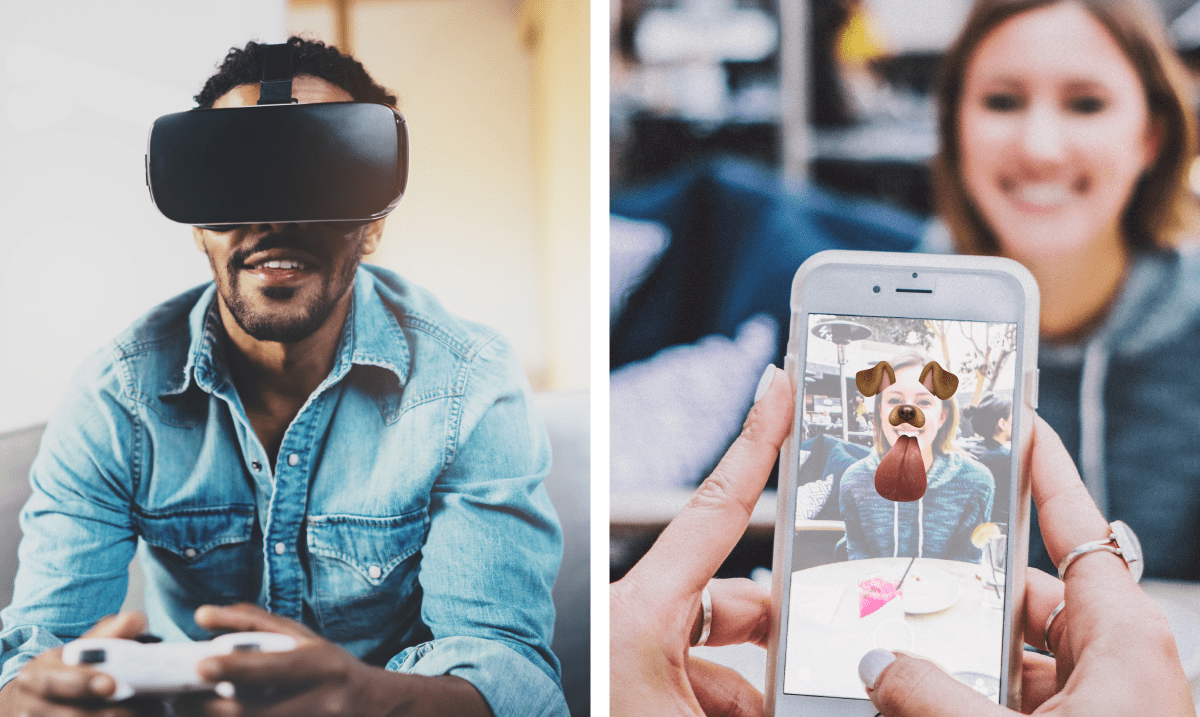If new technology has taught us anything over the last few years, it’s that reality is not fixed. It’s adaptable, and it’s constantly surprising and delighting us.
Both virtual reality (VR) and augmented reality (AR) are viewing experiences that allow us to explore new worlds. They’re areas of rapid growth in the tech space – and it’s important for marketers to understand how they work, and where they’re headed.
What’s the difference between virtual reality and augmented reality?
Virtual reality is an immersive, 360-degree experience. It surrounds you with a digital world, making you feel like you are actually in a different place.
Example of VR: Wearing an Oculus Rift headset to take a scenic kayak ride through the Grand Canyon
Augmented reality modifies the world around you, layering 3D graphics on top of what you see.
Example of AR: Adding 3D World Lenses onto a scene in your Snapchat video
How are VR and AR being used now?
At the beginning of this year, we outlined virtual reality is one of MtoM’s top three initiatives for 2017. VR is a new medium, and it offers limitless opportunities for brands to tell creative stories and engage their audiences.
It’s still not very common to own a VR headset, but with more affordable options entering the market – such as Google’s Daydream View and Samsung’s Gear VR – that’s poised to change. A report from market research firm Super Data estimated that 6.3 VR headsets were shipped in 2016 (including 4.5 million Gear VRs). VR has mainly been associated with gaming in the past, but its reach is becoming much broader.
Pokemon GO has been the most successful and widely adopted use of augmented reality. When it first launched in July 2016, it seemed everyone was glued to their phones playing the new game. And even nine months after launch, in April 2017, Niantic CEO John Hanke revealed that the game still has 65 million active monthly users.
Facebook and Snapchat are also investing in AR technology, with their respective Camera Effects and World Lenses platforms.
What’s the future of VR and AR?
While so far, augmented reality has been used to entertain, in the future it may provide interactive training solutions. A recent TechCrunch article predicts that AR could play an integral role in preparing and training workers for the next generation of jobs:
Imagine putting on a pair of glasses that can understand where you are in time and space and being shown a diagram, a set of instructions or even a 3D hologram that overlays the office or shop floor in front of you, and then steps you through a process you’ve never done before. AR could do that.
Most experts seem to agree that virtual reality will take more time to gain traction – Facebook CEO Mark Zuckerberg estimates another five to 10 years before it becomes more mainstream. But Zuckerberg sees VR as “a good candidate to be the next major computing platform,” and a primary method of communication.
Virtual reality also offers new entertainment and education opportunities. Seeing the world through a VR headset allows users to experience games, films, TV shows and learning resources in an engaging, immersive way.

